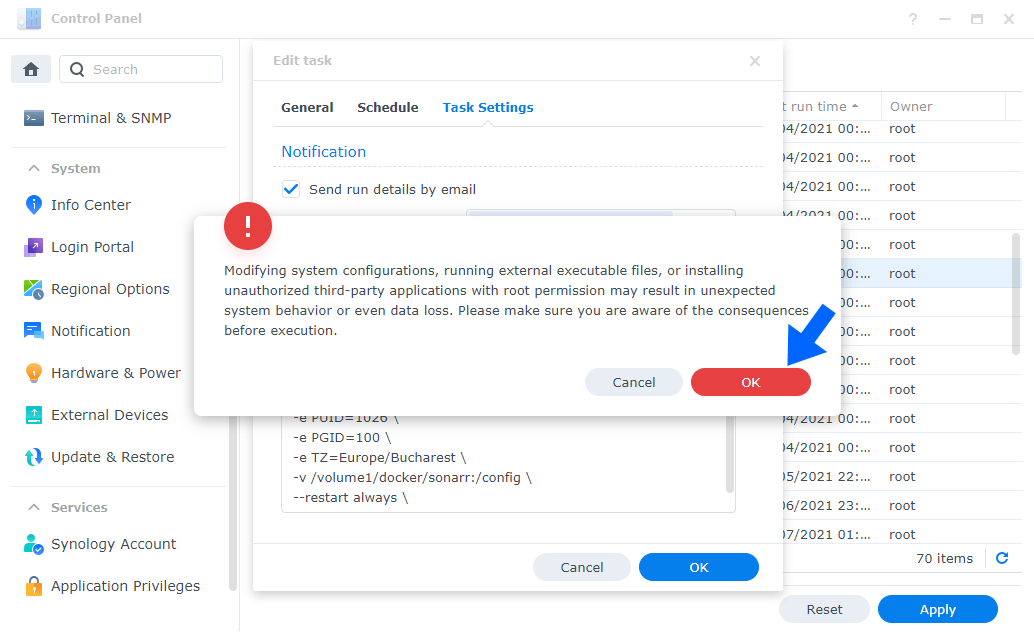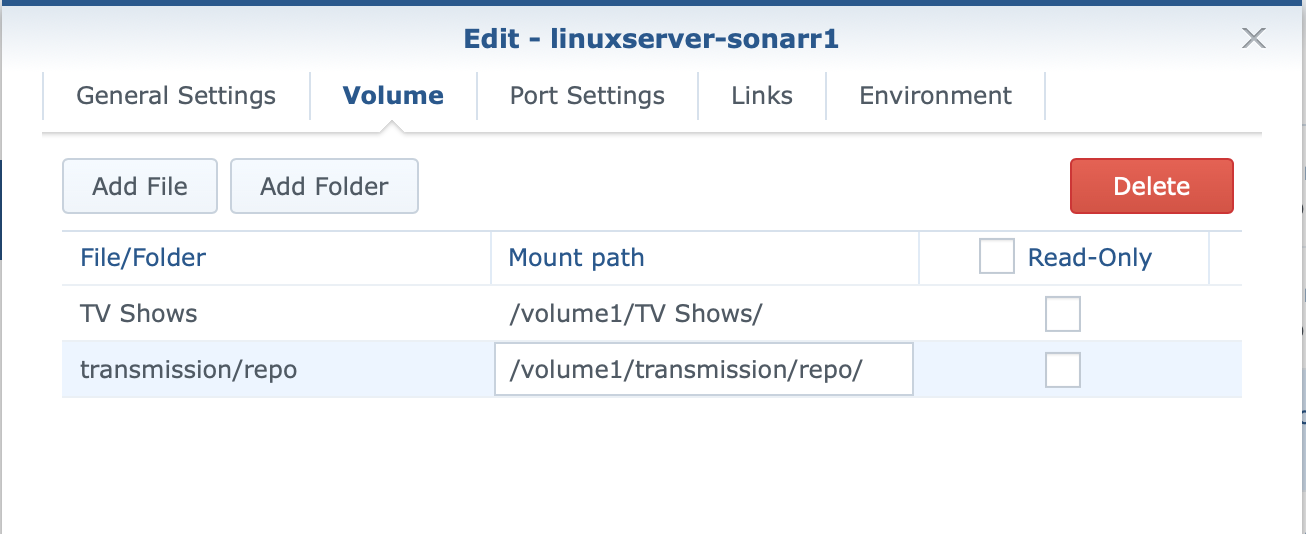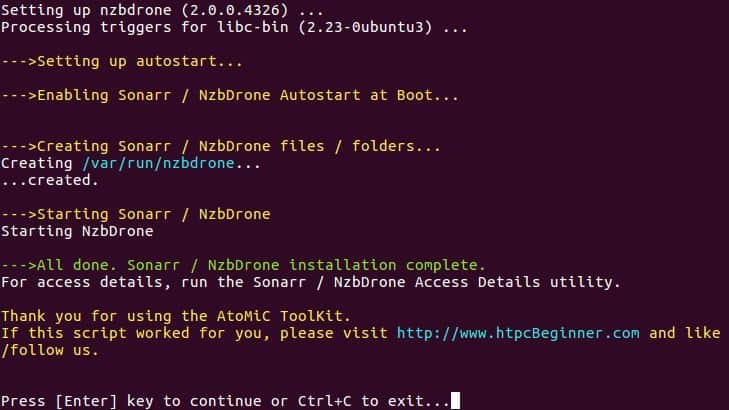
Make sure you check out page 2 of this guide that covers some common basic settings. You should now be able to access Sonarr via the IP of your NAS followed by the port 8989 Finally, click on Done and the container should start to boot. You have now completed the setup of the container.Ĭlick on Apply to move back to the initial settings screen and then click next, you will be shown an overall summary of the settings we have specified, this is a good time to double-check everything is correct. Your timezone /wiki/List_of_tz_database_time_zones The GID you obtained in the user setup guide The UID you obtained in the user setup guide Next we are going to set up a couple of environment variables that docker will use to allow the container access to our files and folders and also to tell it where we live in the world.Ĭlick the Add button, and fill in the following details as per the table/screenshot, you will need to do one at a time. Environment Variables (PGID, PUID and Timezone)

You do not need to set up anything on this tab. We are not going to be specifying specific ports for Sonarr to use as we want to keep things simple, tick the ‘Use the same network as Docker Host’ Links Your path settings should now look like the table/screenshot below. You will now enter ‘/data’ into the ‘Mount path’ box Now add ‘/config’ to the ‘Mount path’ boxĬlick Add Folder again and this time select the top level ‘data’ folder and click Select. We can now move onto the volume tab in which we will be specifying the directories where Sonarr will store its configuration files and where to find our media and downloadsĬlick on Add Folder, click on the docker folder and create a new sub-folder called ‘sonarr’ select this folder and click ‘select’ On the first tab enable ‘Auto Restart’ this will ensure Sonarr will automatically start up whenever you reboot your NAS. Next up we are going to click on the ‘Advanced Settings’ button, this will take you to a new window with a number of tabs which we are going to work through. You will also notice a Configure capabilities button - don’t change anything in here! You will now see the initial setup screen, if you want to you can change the name of the container to something else. In Docker click on the ‘Image’ tab, in the list of your containers select the ‘Linuxserver Sonarr’ image and click on ‘Launch’
#Install sonarr via terminal download
You can check the status of the download over on the ‘Image’ tab. When the dialogue pops up asking you to choose a version, make sure you choose ‘Latest’ from the list. In the list of available containers select the one made by Linuxserver as shown below, right click on it and select ‘Download’ or click the button at the top of the window.

Open up Docker within DSM and navigate to the ‘Registry’ tab and search for ‘Sonarr’. Step 2: Setting up a restricted Docker user.In order for you to successfully use this guide please complete the two preceding guides In this guide I will take you through the steps to get Sonarr up and running in Docker.
#Install sonarr via terminal tv
Sonarr is used to search, download and organise your TV shows in conjunction with your preferred Usenet or Torrent downloaders and indexers. Updated wording in some sections and updated the Docker Compose

Guide re-written and updated with DSM7 screenshots Added new folder mappings to ensure atomic moves and Hard-linking


 0 kommentar(er)
0 kommentar(er)
